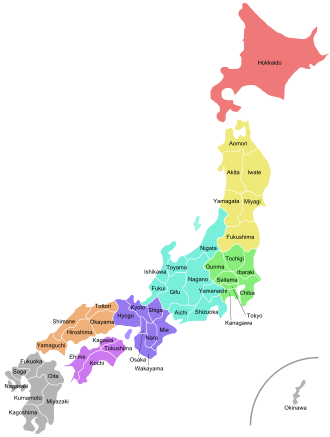**Prefecture Establishment and Historical Background:**
– 47 prefectures in Japan established by the turn of the century.
– Each prefecture has a directly elected governor and a unicameral assembly.
– Prefecture system established by the Meiji government in July 1871.
– Number of prefectures reduced to 47 in 1888.
– Local Autonomy Law of 1947 increased political power to prefectures.
– Proposal in 2003 to consolidate prefectures into about 10 regional states.
– Plan to merge prefectures for greater local autonomy abandoned in 2012.
**Powers and Responsibilities of Prefectures:**
– Central government delegates functions to prefectures and municipalities.
– Prefectural government organizes police force and schools.
– Responsibilities include maintaining hospitals, roads, and waterways.
– Prefectures coordinate and support municipalities in their functions.
– Most municipalities heavily depend on central government funding.
**Types and Characteristics of Prefectures:**
– Edo period established bugyō-ruled zones and township-ruled zones.
– Nine bugyō-ruled zones became fu, while others became ken.
– Tokyo, Osaka, and Kyoto designated as fu in 1871.
– Tokyo became to-to in 1943 during World War II.
– Little functional difference between the four types of local governments.
– Hokkaidō is the only remaining ‘do’ or circuit in Japan.
**Specific Prefecture Examples – Tokyo, Osaka, Kyoto, and Hokkaidō:**
– Tokyo referred to as to, often translated as metropolis.
– Tokyo City established with Fuhanken sanchisei.
– Tokyo subdivided into wards, towns, and villages.
– Hokkaidō’s name originated from an early Japanese explorer.
– Osaka and Kyoto Prefectures referred to as ‘fu.’
– Subprefectures in Hokkaidō handle administrative duties.
**Administrative Divisions and Geographical Notes:**
– Prefectures are grouped into eight regions in Japan.
– Regions lack elected officials or corporate bodies.
– Ordering of prefectures based on geographic region is traditional.
– The sortable table can be altered to reflect traditional Japanese regions and ISO parsing.
– Geographical notes on Tokyo Metropolitan Government and ISO 3166 standards for geographical classifications.
Japan is divided into 47 prefectures (都道府県, todōfuken, [todoːɸɯ̥ꜜkeɴ] ⓘ), which rank immediately below the national government and form the country's first level of jurisdiction and administrative division. They include 43 prefectures proper (県, ken), two urban prefectures (府, fu: Osaka and Kyoto), one regional prefecture (道, dō: Hokkaidō) and one metropolis (都, to: Tokyo). In 1868, the Meiji Fuhanken sanchisei administration created the first prefectures (urban fu and rural ken) to replace the urban and rural administrators (bugyō, daikan, etc.) in the parts of the country previously controlled directly by the shogunate and a few territories of rebels/shogunate loyalists who had not submitted to the new government such as Aizu/Wakamatsu. In 1871, all remaining feudal domains (han) were also transformed into prefectures, so that prefectures subdivided the whole country. In several waves of territorial consolidation, today's 47 prefectures were formed by the turn of the century. In many instances, these are contiguous with the ancient ritsuryō provinces of Japan.
| Prefecture 都道府県 Todōfuken | |
|---|---|
 | |
| Category | First level administrative division of a unitary state |
| Location | Japan |
| Number | 47 Prefectures |
| Populations | 605,000 (Tottori) – 14,135,000 (Tōkyō) |
| Areas | 1,861.7 km2 (718.8 sq mi) (Kagawa) – 83,453.6 km2 (32,221.6 sq mi) (Hokkaido) |
| Government |
|
| Subdivisions |
|
Each prefecture's chief executive is a directly elected governor (知事, chiji). Ordinances and budgets are enacted by a unicameral assembly (議会, gikai) whose members are elected for four-year terms.
Under a set of 1888–1890 laws on local government until the 1920s, each prefecture (then only 3 -fu and 42 -ken; Hokkaidō and Okinawa-ken were subject to different laws until the 20th century) was subdivided into cities (市, shi) and districts (郡, gun) and each district into towns (町, chō/machi) and villages (村, son/mura). Hokkaidō has 14 subprefectures that act as General Subprefectural Bureaus (総合振興局, sōgō-shinkō-kyoku, "Comprehensive Promotion Bureau") and Subprefectural Bureaus (振興局, shinkō-kyoku, "Promotion Bureau") of the prefecture. Some other prefectures also have branch offices that carry out prefectural administrative functions outside the capital. Tokyo, the capital of Japan, is a merged city-prefecture; a metropolis, it has features of both cities and prefectures.
Each prefecture has its own mon for identification, the equivalent of a coat of arms in the West.
